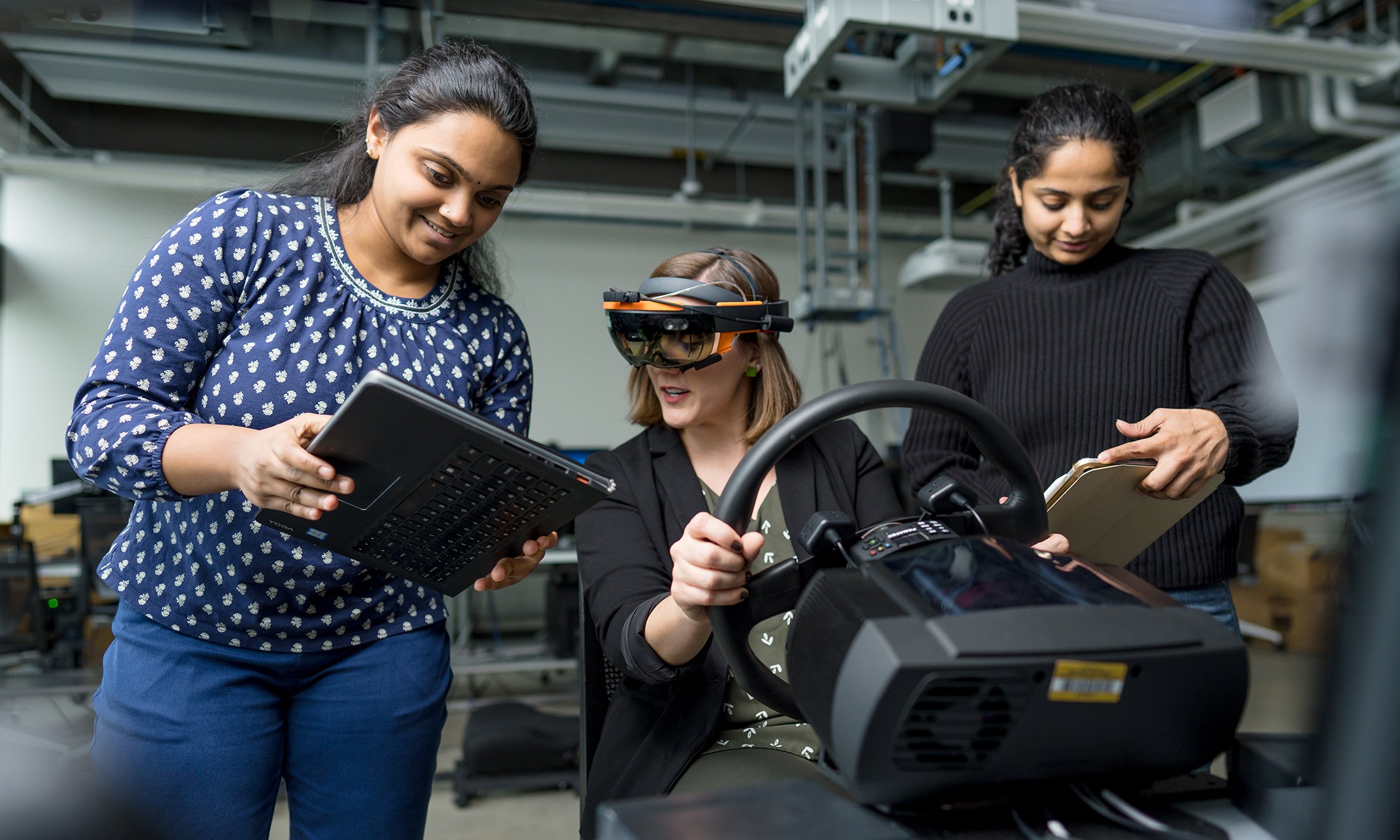In the Driver's Seat
Dr. Smith researches how new in-vehicle devices may affect drivers’ behaviors
“Technology changes us as human beings; it changes how we respond to the world. The integration of new technologies into dynamic environments has long-term implications on human performance and safety, which can be both positive and negative,” says Missie Smith, Ph.D., assistant professor of industrial and systems engineering (ISE), about her interest in human-factors engineering.
Dr. Smith has her eyes set high on augmented reality head-up displays (AR HUDs) to understand how new in-vehicle devices may affect drivers’ behaviors. This knowledge will inform the design of future vehicle display technology to optimize its benefits and minimize potential hazards.
In the coming years, it is likely that augmented reality and virtual reality technology will gain popularity in commercial and, possibly, private vehicles. Dr. Smith believes that the potential effects of this type of technology on driving performance need further exploration.
“We use virtual reality to study how people respond to augmented reality visual cues,” says Dr. Smith, who also teaches the Virtual and Augmented Reality course that she has developed.
"The ISE Department works to educate our students on the latest techniques and tools, and Professor Smith is contributing to this effort with the addition of augmented reality tools into the Human-Centered Engineering (HCE) Laboratory,” says Robert Van Til, Ph.D., chair of the Department of Industrial and Systems Engineering.
Using the driving simulator in the HCE Laboratory, Dr. Smith and her students explore differences in glance patterns, driving performance and user preferences utilizing various levels of complexity for each visual search task and multiple repetitions of each level of complexity.
“While in-vehicle displays can provide timely navigation instructions and other benefits, they also change how people drive and look at the world,” Dr. Smith says. “Our research, for example, suggests that AR HUDs afford longer glances without negatively affecting the longitudinal and lateral control of the vehicle, but it also shows an increase in ignoring hazards, which can lead to potentially deadly collisions.”
Deepika Nandakumar, an engineering management graduate student who works with Dr. Smith, believes that considering physical and cognitive demands of the human being while designing a new product or technology is a must.
“Our research evaluates the effects of displays on driver behaviors, ideal position and superimposition for displays to create distraction-free driving, trust and acceptance of technology by customers,” Nandakumar says.
Dr. Smith’s research has far-reaching implications for how future researchers should evaluate the visual demands for AR HUDs. This new knowledge can also help apply AR technology to other domains, like healthcare and manufacturing.
Dr. Smith welcomes anyone who might be interested in getting involved in her research in any capacity. To connect with Dr. Smith, email her directly at [email protected] with the subject headline “HCE Lab.”

 May 07, 2020
May 07, 2020
 By Arina Bokas
By Arina Bokas









